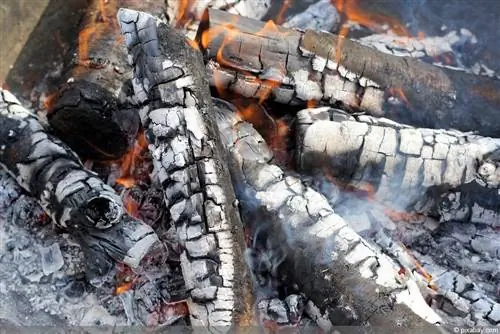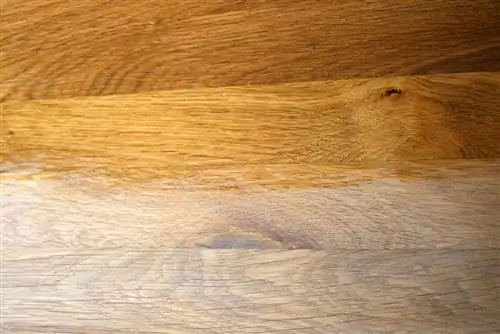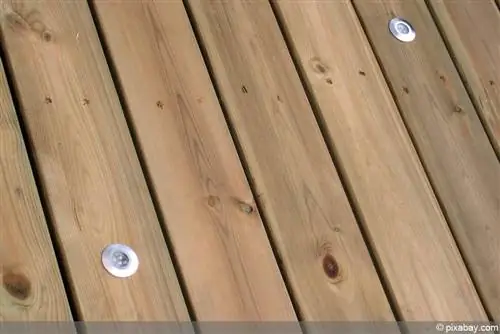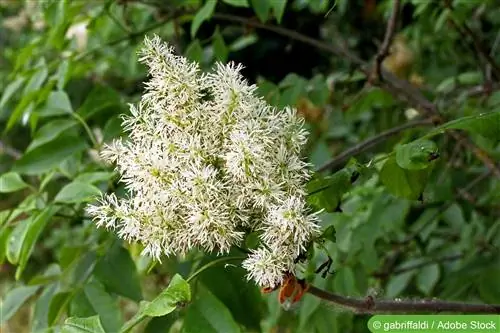- Author admin [email protected].
- Public 2023-12-17 03:39.
- Last modified 2025-06-01 06:48.
In the natural garden, wood ash is finding new honor as an organic fertilizer. Home gardeners with tiled stoves, grills and fireplaces do not carelessly throw away the dusty, gray residue. The ash contains a concentrated load of valuable nutrients and trace elements, such as calcium, magnesium and potassium. This guide will familiarize you with all aspects of using wood ash as fertilizer. These 70 plants appreciate barbecue and charcoal.
Why is wood ash suitable as fertilizer?
If you view wood ash as just waste, you are missing out on a natural garden fertilizer. Oxygen, nitrogen and sulfur are lost during the combustion process because they escape as gases. The fine residues still contain valuable substances that promote plant growth. Calcium makes up the largest proportion at 25 to 45 percent. Other components include potassium, magnesium, phosphorus as an oxide and mineral trace elements such as sodium, iron, manganese and boron. Wood ash also acts as a problem solver if garden soil is too acidic. With a pH value of 11 to 13, acidic soils are brought into a he althy balance within a short time.
Note important requirements
For wood ash to meet the high expectations as a fertilizer, fundamental requirements must be taken into account. Depending on the origin of the wood, the combustion residues may contain highly toxic heavy metals such as lead, cadmium and chromium. For example, if the wood comes from vegetation on the edge of busy roads or industrial areas, exhaust gases and other toxins will have accumulated in it. Under the following premises, wood ash is suitable for supplying plants with nutrients:
- Untreated wood from organic farming
- No painted or treated wooden furniture
- Origin far from highways and industrial areas
- Caution: Coal briquettes are unsuitable
Lasures and paint residues turn into toxic substances, such as dioxin, when burned. If such wood ash is used as fertilizer in the vegetable garden, the toxins enter the human organism through food with fatal consequences. Therefore, make sure in advance where the wood that you burn in the fireplace or tiled stove comes from. If you have purchased a large amount of firewood and plan to use the ash as fertilizer, it is worth investing in a laboratory test. A sample of 10 grams is sufficient for a reliable analysis for the most common heavy metals. The price is usually between 100 and 150 euros.
Tip:
In the natural garden, wood ash is useful in combating weeds, diseases and pests. Algae and mosses have no resistance to the ash, nor do leaf beetles, flea beetles and other rabble. Harmful road s alt is a thing of the past when wood ash spread in winter makes smooth paths non-slip.
Fertilizing with wood ash - instructions
If wood ash meets all the requirements explained as a natural fertilizer, it depends on the competent dosage and application. In contrast to classic organic fertilizers such as compost and bark humus, the sword of Damocles of over-fertilization always dangles over plants whose nutrient supply is based on ash. How to do it right:
- Best time is in autumn
- Enrich wood ash with nitrogen-rich horn shavings in spring
- Sprinkle a maximum of 30 grams per square meter
Work the ash in lightly with the rake and add water. Apply wood ash as a fertilizer primarily on loamy to loamy-clay soils. Such a soil condition can absorb the increase in pH better than loose, sandy soil with low buffering capacity. However, alkaline fertilizer is unsuitable for the natural nutrient supply of ericaceous plants such as rhododendrons or azaleas. In addition, wood ash should not be used for foliar fertilization. The risk of burns on the epidermis of the leaves is too great.
Plants with a penchant for wood ash
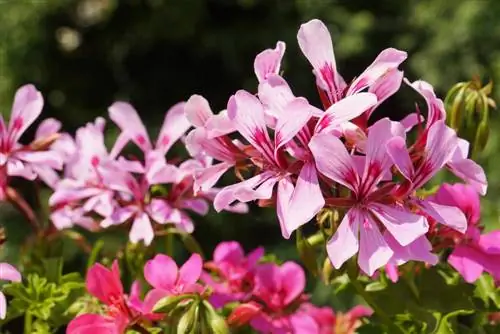
A wide range of magnificent ornamental plants and popular crops benefit from wood ash as fertilizer. As a rule of thumb, plant species that tolerate lime respond well to the administration of pure wood ash. Conversely, this means that species that are intolerant to lime are not suitable for this nutrient supply option. Below we introduce you to 70 plants that love barbecue and charcoal:
Flowers and perennials
- Cyclamen (Cyclamen)
- Asters (Aster)
- Adonis (Adonis)
- Blue cushion (Aubrieta)
- Leadwort (Ceratostigma)
- Burning herbs (Phlomis)
- Wood anemone (anemone)
- Diptam, Burning Bush (Dictamnus albus)
- Edelweiss (Leontopodium)
- Honorary Award (Veronica)
- Feather grasses (Stipa)
- Fuchsias (Fuchsia)
- Geraniums (Geranium)
- Gypsum herbs (Gypsophila)
- Bluebells, devil's claws (Phyteuma)
- Grass lilies (Anthericum ramosum)
- Hawk herbs (Hieracium)
- Autumn crocus (Colchicum autumnale)
- Deertongue Fern (Phyllitis)
- Cape gooseberry, Jew cherry (Physalis)
- Carpathian bellflower (Campanula carpathica)
- Koch's gentian, stemless gentian (Gentiana acaulis)
- Globular flowers (Globularia)
- Pasqueflower, pasqueflower (Anemone pulsatilla)
- Lavender (Lavandula)
- Liverwort (Hepatica)
- Lilies (Lilium)
- Man's Shield, Ciliated Man's Shield (Androsace chamaejasme)
- Mieren (Minuartia)
- Evening primrose (Oenothera)
- Cloves (Dianthus)
- Opuntia (Opuntia)
- Peonies (Paeonia)
- Purple bells (Heuchera)
- Scabiosa (Scabiosa)
- Yarrow (Achillea)
- Architecture flowers (Iberis)
- Snow rose, Christmas rose, hellebore (Helleborus)
- Silver thistle (Carline acaulis)
- Sunflower (Helianthemum)
- Spur flowers (Kentranthus ruber)
- Saxifraga (Saxifraga)
- Spurge (Euphorbia)
- Zieste (Stachys)
- Quickgrass (Briza media)
Ornamental and fruit trees

- Alpine clematis (Clematis alpina)
- Barberry, sour thorn (Berberis vulgaris)
- Boxwood (Buxus)
- Field maple (Acer campestre)
- Lilac (Syringa)
- Raspberries (Rubus idaeus)
- Mother of pearl bush (Kolkwitzia)
- Pipe bush, false jasmine (Philadelphus)
- Roses (Pink)
- buddleia, butterfly lilac (Buddleja davidii)
- Gooseberries (Ribes uva-crispa)
- Grape vines (Vitis vinifera)
- Walnut (Juglans regia)
Tip:
If magnificent shrubs and trees bleed after pruning, wood ash should be on hand. If you dust cuts lightly with ash, the annoying flow of sap will quickly stop. Furthermore, the powdery coating promotes wound healing and contributes to disinfection.
Vegetable and herb plants
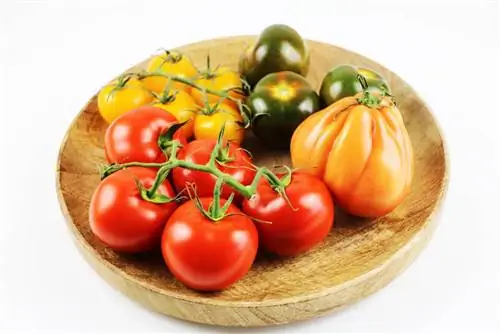
- Potatoes, potatoes (Solanum tuberosum)
- Carrots (Daucus)
- Parsley (Petroselinum crispum)
- Leek, leek (Allium ampeloprasum)
- Rhubarb (Rheum)
- Brussels sprouts (Brassica oleracea var. gemmifera)
- Beetroot (Beta vulgaris)
- Sage (Salvia)
- Chives (Allium schoenoprasum)
- Celery (Apium)
- Tomatoes, paradise apples, tomatoes (Solanum lycopersicum)
- Onions (Allium cepa)
Wood ash as lawn fertilizer - the premium solution
Composition, consistency and effect make wood ash the ideal lawn fertilizer. It is the noble grasses that have a particular benefit from the combination of nutrients, lime and high pH value. The potassium it contains strengthens winter hardiness by lowering the freezing point in the cell tissue and strengthening the cell walls. Lime raises the pH value to be too acidic, which deprives moss and weeds of their livelihood. Given the low nitrogen content, ash from wood burning ideally acts as autumn fertilizer for the lawn. At this time of year the focus is on preparing for winter and not on vigorous growth of delicate green grasses. With a dosage of 100 milliliters of wood ash per square meter, your lawn is well prepared for the rigors of the cold season.

